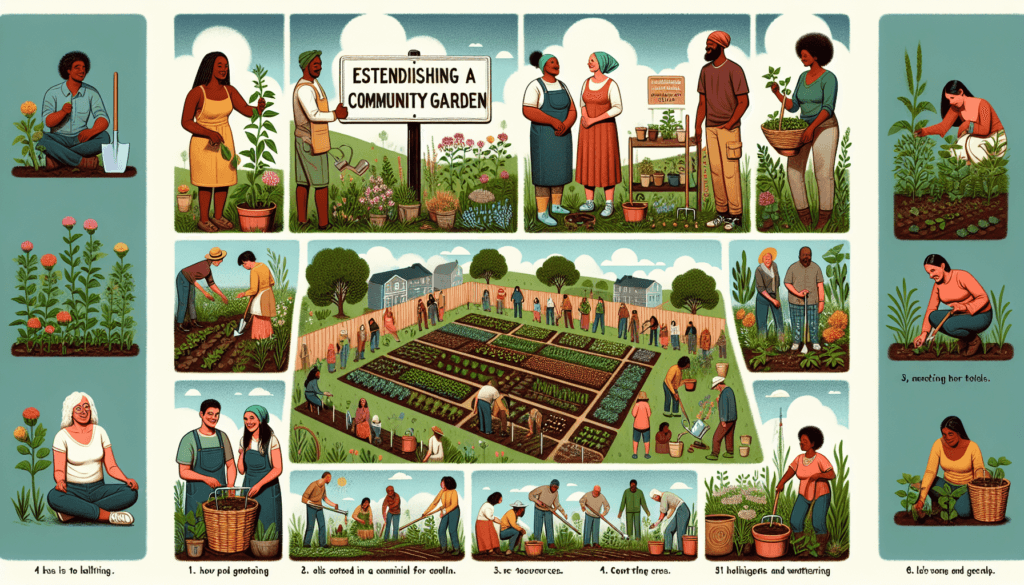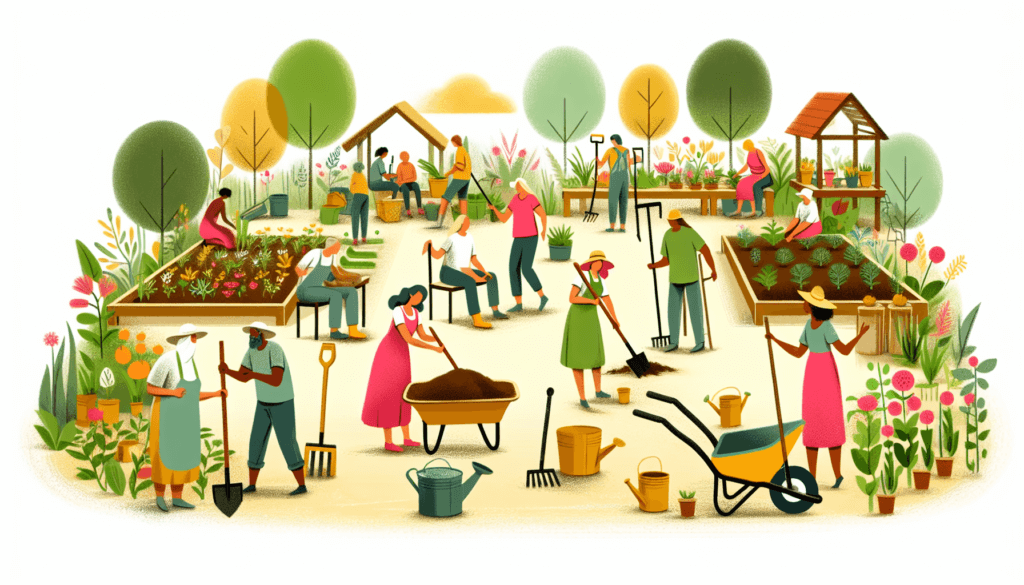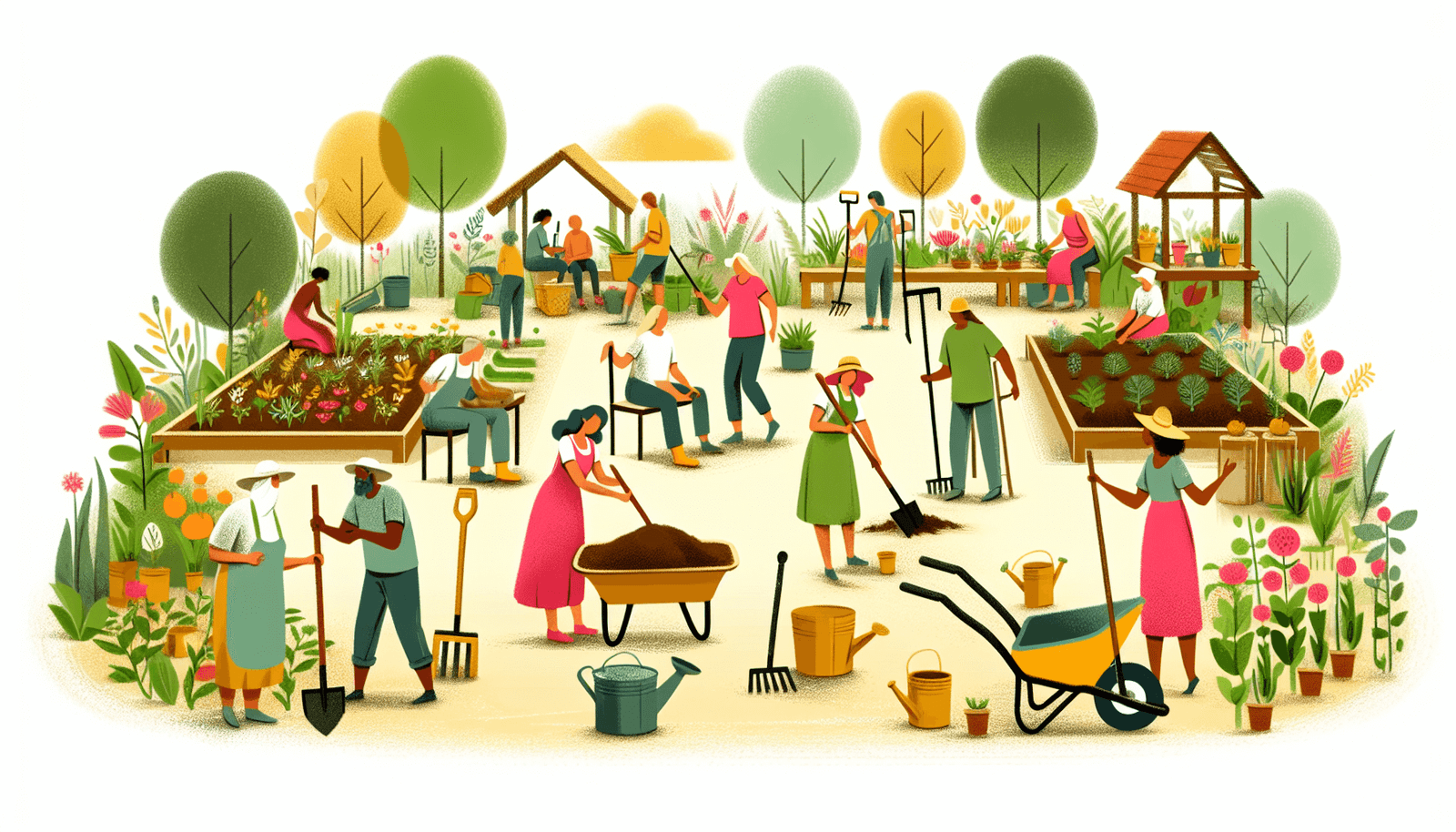Are you fascinated by the idea of creating a community garden but not sure where to start? Look no further! This article will guide you through the essential elements and steps needed to bring a vibrant community garden to life. From securing a suitable location to rallying enthusiastic neighbors, we’ll explore the key ingredients that make a community garden thrive. So, roll up your sleeves and get ready to dive into the world of community gardening! Creating a community garden is a rewarding and fulfilling endeavor that brings people together to cultivate a shared green space. It not only beautifies the neighborhood but also promotes sustainability, provides access to fresh produce, and fosters a sense of community amongst its members. However, starting a community garden requires careful planning, organization, and community engagement. In this article, we will guide you through the process of creating a community garden, covering crucial aspects such as location, planning, legal requirements, community engagement, site preparation, garden design, planting and maintenance, watering and irrigation, harvesting and distribution, as well as sustainability and evaluation measures.

Location
The first step in creating a community garden is finding the right location. A suitable space must have sufficient availability of land to accommodate the garden’s needs and potential expansion. Additionally, access to sunlight is crucial for the healthy growth of plants, so choosing a location with ample direct sunlight is ideal. Proximity to a water source is also essential for easy irrigation, minimizing water waste, and ensuring that the garden thrives. Lastly, safety and security measures should be considered when selecting a location. It’s important to choose an area that is safe for community members to visit and work in regularly.
Planning
Once you have identified a suitable location, it is crucial to establish clear goals and objectives for the community garden. Are you aiming to provide fresh produce for community members, promote environmental education, or beautify the neighborhood? Defining these goals will help guide your decision-making throughout the process. Determining the garden size and layout is another important step. Consider the available land and the number of participants, ensuring there is enough space for different types of plants and communal areas. Creating a budget and establishing a timeline are essential tasks to ensure the project stays on track. Lastly, forming a planning committee that includes community members and stakeholders will ensure a diverse range of perspectives and skills are brought to the table.

Legal Requirements
Before breaking ground, it is essential to understand and comply with any legal requirements associated with starting a community garden. Obtaining necessary permits ensures that you are operating within the law and can avoid any potential issues in the future. Compliance with zoning regulations is also crucial to ensure the garden is allowed in the chosen location and meets all necessary guidelines. Additionally, it’s important to consider liability insurance to protect the garden and its participants in case of any accidents or injuries. Establishing a legal structure for the community garden, such as a registered nonprofit or a community organization, can provide stability and a clear framework for decision-making.
Community Engagement
The success of a community garden relies heavily on engaging and involving the local community. Building partnerships with local organizations, such as schools, churches, or neighborhood associations, can provide valuable resources, support, and collaboration opportunities. Conducting community meetings is an excellent way to gather input, share information, and create a sense of ownership among community members. Recruitment of volunteers is another vital aspect of community engagement. Encouraging individuals to contribute their time and skills to the garden fosters a sense of ownership and connection. Defining clear roles and responsibilities for volunteers will ensure that everyone knows what is expected of them and can work together effectively.

Site Preparation
Before planting can begin, thorough site preparation is necessary to set the stage for a successful community garden. Clearing and leveling the land is the initial step to create a blank canvas for the garden. Removing debris, weeds, and any unwanted vegetation will make space for the new garden beds and pathways. Soil testing and improvement are essential to ensure the soil is fertile and suitable for growing plants. Based on the test results, you may need to add organic matter, such as compost or manure, to enrich the soil. Installing an irrigation system is crucial for efficient and adequate watering. This can be achieved through hoses, sprinklers, or drip irrigation, depending on the garden’s size and needs. Finally, building raised beds can help provide better drainage, prevent soil erosion, and make gardening more accessible for individuals with mobility challenges.
Garden Design
Designing the community garden requires careful consideration to make it an inviting and functional space for all participants. Accessibility is a fundamental aspect that should not be overlooked. Creating raised beds, wide pathways, and wheelchair ramps ensures that people of all abilities can contribute to and enjoy the garden. Choosing suitable plant varieties for the local climate and soil conditions is another vital aspect of garden design. Identifying plants that are well-suited to the location’s sunlight exposure and water availability will increase the chances of a successful harvest. Creating paths and seating areas within the garden encourages community members to relax, socialize, and appreciate the beauty of the space. Installing signage and labels for different plants will not only educate visitors but also add an aesthetic touch to the garden.

Planting and Maintenance
After the garden is designed, it’s time to start planting and nurturing the plants. Planning the planting schedule is important to ensure a continuous supply of fresh produce. Consult gardening resources or local experts to determine the best times to plant different types of crops. Source quality seeds and seedlings from reputable suppliers to ensure the success of your plants. Preparing the soil is essential before planting, as it provides the necessary nutrients and space for roots to grow. Maintaining the garden requires a regular routine for tasks such as weeding, mulching, and pest control. Establishing a maintenance routine and involving community members in these tasks will help ensure the garden’s health and productivity.
Watering and Irrigation
Watering and irrigation are crucial components of a thriving community garden. Choosing appropriate watering methods depends on the garden’s size, water availability, and plant requirements. This can range from hand-watering with a hose or watering can to more advanced systems such as sprinklers or drip irrigation. Regular monitoring of soil moisture levels is essential to avoid over or under-watering. Using moisture meters or simply feeling the soil with your hand can help determine when it’s time to water. Promoting water conservation practices within the garden, such as collecting rainwater or using mulch to retain moisture, is not only environmentally friendly but also helps reduce water usage and associated costs.

Harvesting and Distribution
One of the most rewarding aspects of a community garden is the opportunity to enjoy the fruits of your labor. Creating a harvesting plan ensures that the produce is collected at the optimal time and handled properly to maintain freshness and quality. Organizing community workdays can provide an opportunity for all participants to come together, share the workload, and forge stronger bonds within the community. Distributing the harvested produce to garden participants not only allows them to enjoy the fruits of their labor but also helps foster a sense of pride and community spirit. Additionally, establishing partnerships with local food banks or community organizations can provide an avenue to donate excess produce to those in need, ensuring that the benefits of the garden reach beyond its immediate participants.
Sustainability and Evaluation
Implementing sustainable practices within the community garden is essential for its long-term success and environmental impact. This can be achieved by composting kitchen scraps, using organic fertilizers and pest control methods, and practicing responsible water usage. Tracking the progress of the garden through regular evaluations is important to gauge its success, learn from any challenges, and identify areas for improvement. Collecting community feedback through surveys or meetings can provide valuable insights for future planning and decision-making. Continuously adapting and improving the garden based on feedback and new information ensures that it remains a vibrant, thriving, and sustainable community space.
In conclusion, creating a community garden requires careful planning, community engagement, and adherence to legal requirements. Finding the right location with access to sunlight and a water source is essential. Thorough site preparation, thoughtful garden design, and proper planting and maintenance ensure the garden’s success. Watering and irrigation practices, harvesting, and distribution methods must be considered to maximize the garden’s impact. Implementing sustainable practices and regularly evaluating the garden’s progress ensures its long-term viability. By following these steps, you can create a thriving community garden that brings together neighbors, promotes sustainability, and fosters a sense of pride and belonging within your community.


